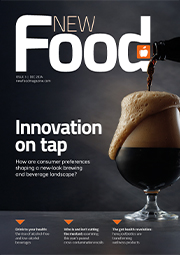Lot-to-lot variation: a neglected issue in method validation of LC-MS-based assays
- Like
- Digg
- Del
- Tumblr
- VKontakte
- Buffer
- Love This
- Odnoklassniki
- Meneame
- Blogger
- Amazon
- Yahoo Mail
- Gmail
- AOL
- Newsvine
- HackerNews
- Evernote
- MySpace
- Mail.ru
- Viadeo
- Line
- Comments
- Yummly
- SMS
- Viber
- Telegram
- Subscribe
- Skype
- Facebook Messenger
- Kakao
- LiveJournal
- Yammer
- Edgar
- Fintel
- Mix
- Instapaper
- Copy Link
Posted: 8 April 2018 | David Stadler, Rudolf Krska | No comments yet
Food analysis, particularly the determination of contaminants and residues, is often based on LC-MS methods in combination with external solvent-based or matrix-matched calibration. The performance of such methods is typically evaluated by in-house validation from replicate analysis of a single lot of a matrix. However, different lots of a matrix might have different extraction recovery factors (RE) or signal suppression/enhancement (SSE) effects, resulting in lot-to-lot variation. Therefore, failing to consider this variation might lead to an underestimation of the uncertainty of the measurement result. Here, David Stadler and Rudolf Krska from the University of Natural Resources and Life Sciences, Vienna, discuss the impact of the lot-to-lot variation on the accuracy of a multi-mycotoxin assay.


Ensuring food safety has become of increasing concern for food producers, especially due to the complexity of a globalised food-supply chain, increased public awareness and media attention on food quality, as well as – most importantly – potential health implications. Mycotoxins (toxic secondary metabolites produced by fungi) can contaminate food commodities either on the field or during storage and belong to the category of most feared food contaminants. The potential health risk associated with a mycotoxin contamination of the food supply has been recognised by regulatory bodies, such as the European Commission (EC), which have imposed maximum levels for major mycotoxins.1,2 Comprehensive multi-mycotoxin methods, covering several hundred analytes, allow for the simultaneous determination of the whole spectrum of mycotoxins that occurs in food and feed chains.
The rest of this content is restricted - login or subscribe free to access


Why subscribe? Join our growing community of thousands of industry professionals and gain access to:
- bi-monthly issues in print and/or digital format
- case studies, whitepapers, webinars and industry-leading content
- breaking news and features
- our extensive online archive of thousands of articles and years of past issues
- ...And it's all free!
Click here to Subscribe today Login here
Issue
Related topics
Contaminants, Food Safety, Liquid chromatography–mass spectrometry (LC-MS), Mycotoxins, Quality analysis & quality control (QA/QC)
Related organisations
MyToolBox, University of Natural Resources and Life Sciences Vienna (BOKU)







